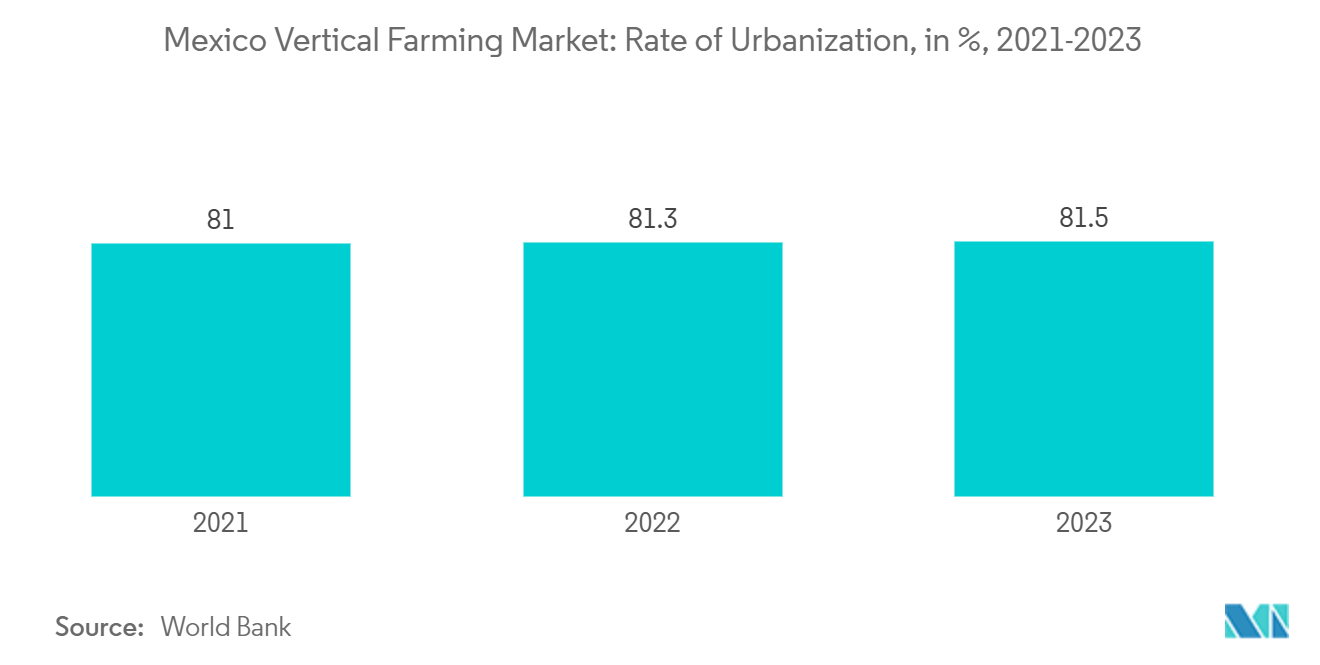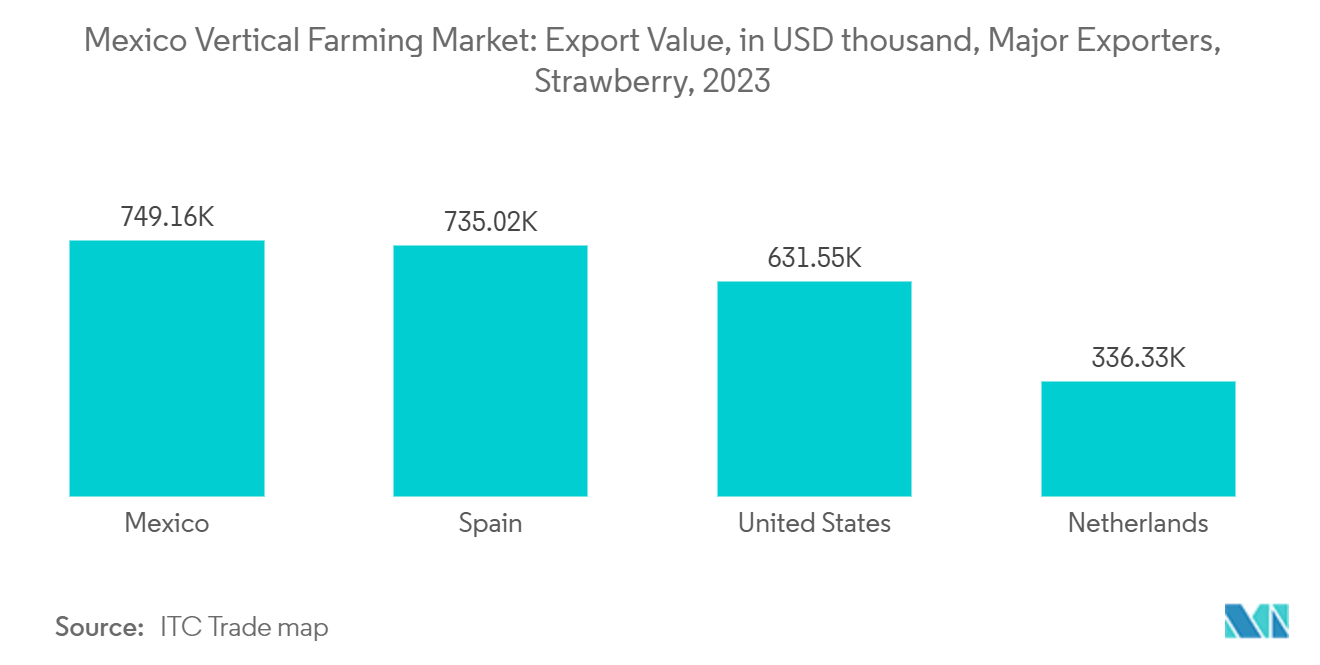Market Trends of Mexico Vertical Farming Industry
Hydroponics segment Dominate the Market
- Mexico's hydroponics market is on the rise, spurred by the urgent need for innovative agricultural solutions to tackle challenges like food security, urbanisation, and environmental sustainability. World Bank data highlights that Mexico's urbanization rate climbed from 80.4% in 2019 to 81.5% in 2023. This swift urbanization has led to a consistent decline in the country's arable land. Specifically, the World Bank reports an 11.5% reduction in arable land over the decade leading up to 2021. Given these challenges, hydroponics emerges as a promising solution, optimizing resource use and boosting crop yields. As urban populations swell and the appetite for fresh, locally sourced produce grows, Mexico's market for hydroponic systems continues to expand.
- In Mexico, urban centres such as Mexico City and Guadalajara are increasingly adopting hydroponic systems, evident in both commercial setups and community gardens. The companies are actively promoting sustainable agricultural practices, including hydroponics, as a key component of its strategy to bolster food security. In 2023, Ays Proje, a greenhouse-focused subsidiary of the Aytekin Group, made its debut in the Mexican market, branding itself as Ayt Mexico. The company has signed a deal for its inaugural project in Mexico, a 2-hectare hydroponic greenhouse set to be constructed this year in Guzman, Jalisco.
- Furthermore, researchers highlight that companies engaged in hydroponic production in Mexico utilize indigenous components that elevate substrate crops, enhancing aeration and curbing humidity. This approach safeguards the crops from diseases, preventing potential spread to the entire plantation. For instance, research by plantation advisors and growers at Centro Universitario Ceickor (Mexico) reveals that Hydroponic Systems company employs Spacer, a professional drainage system, boosting production and quality by 3 to 5%.

Berries Lead as the Fastest Growing Crop Type
- Berries rank among Mexico's top agricultural commodities, with a diverse array of species cultivated, including cranberries, strawberries, raspberries, and blackberries. Their premium quality and sought-after traits have elevated them to the status of one of Mexico's key export commodities. Furthermore, as global demand for fresh berries surges, Mexico's role as a primary supplier bolsters its trade ties, especially with the United States, which consumes a significant share of these exports. For example, according to the ITC trade map, Mexico stands as the world's leading strawberry exporter, boasting an impressive export value of USD 749,155 thousand. This robust export valuation is supporting the production of quality production thereby driving the market's growth.
- Despite the high export value of berries, the industry grapples with significant barriers that hinder its full potential. Water scarcity stands out as a pressing challenge for berry producers in Mexico. To counter these challenges and boost production, advanced cropping techniques, including hydroponics and aquaponics, are being increasingly adopted, fueling segment growth.
- Furthermore, the implementation of new projects for the growth of berries in controlled environments is boosting the segment's growth. For instance, in 2024, a Hydroponic Systems company started a new project in Mexico which aimed to install a total of 12,168 linear meters of its Evolution system, consisting of an Elevated Spacer and a metal gutter. This system is specifically designed for the cultivation of strawberries that are able to achieve a high production per plant. Therefore, the high export potential of the berries coupled with the new project favouring the production of the produce in controlled environments are the factors driving the market growth during the forecast period.


